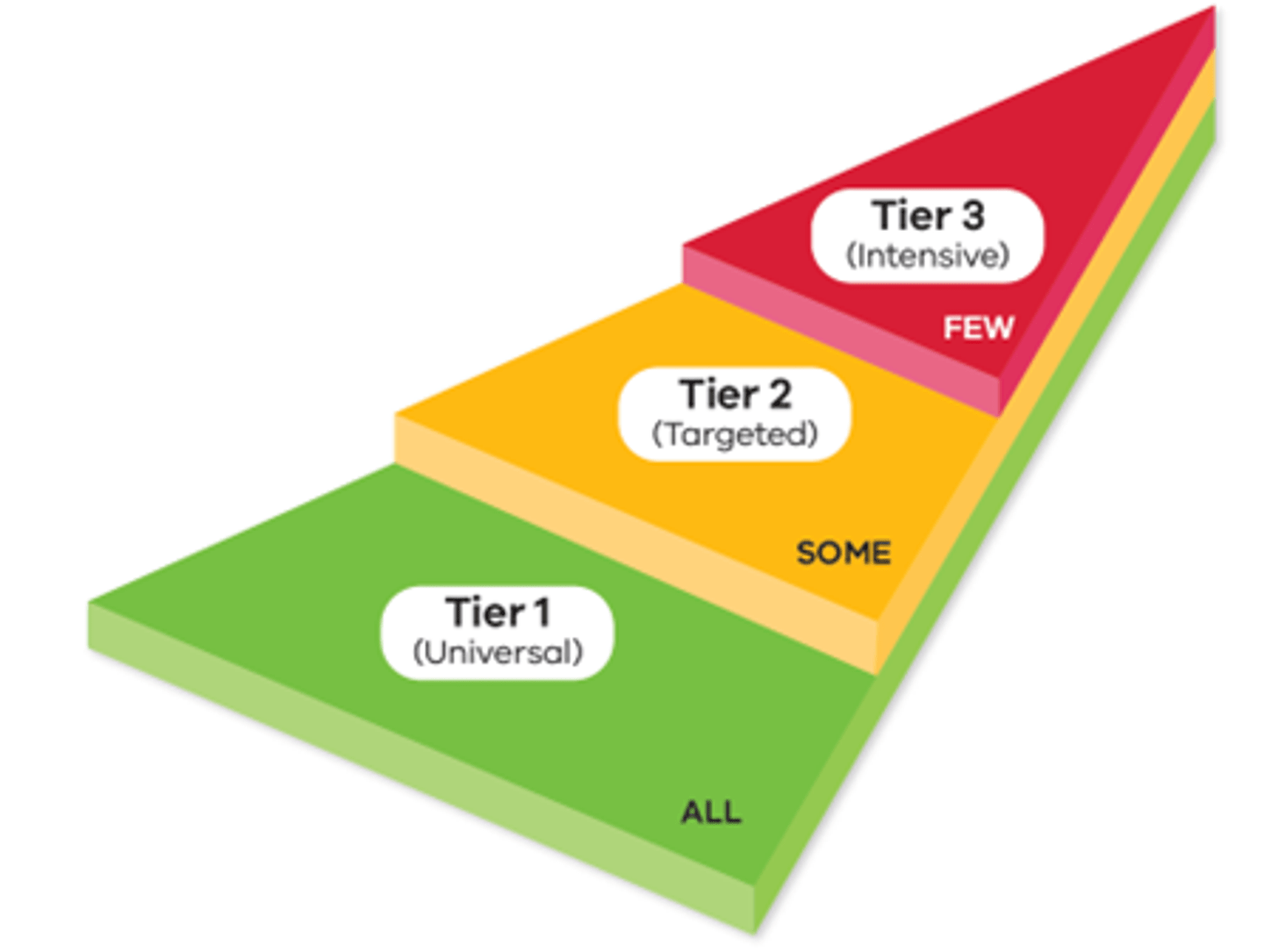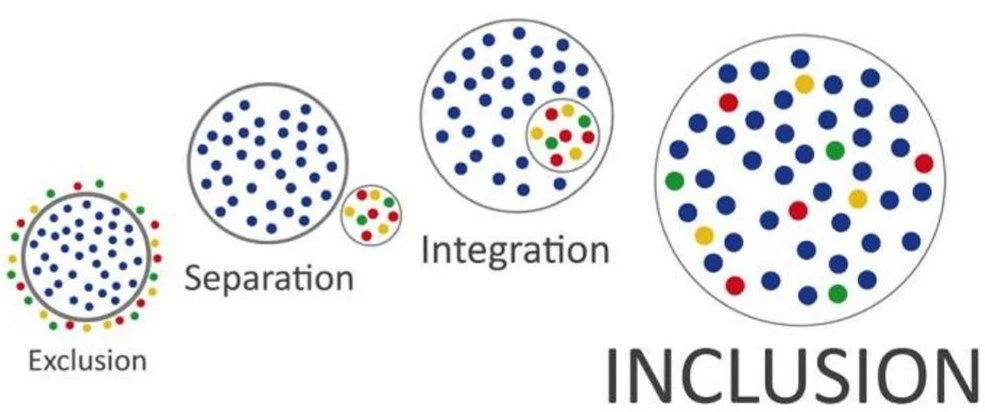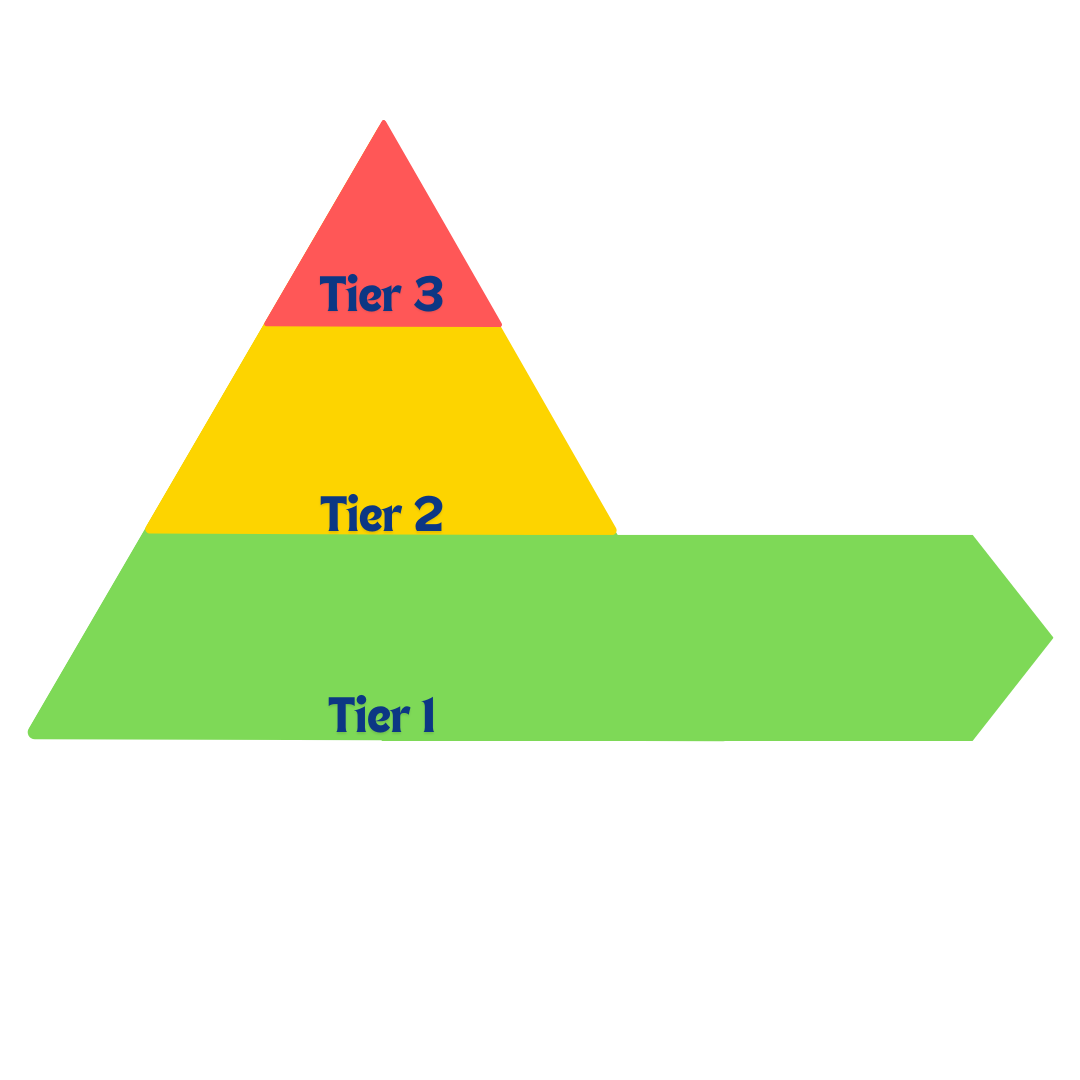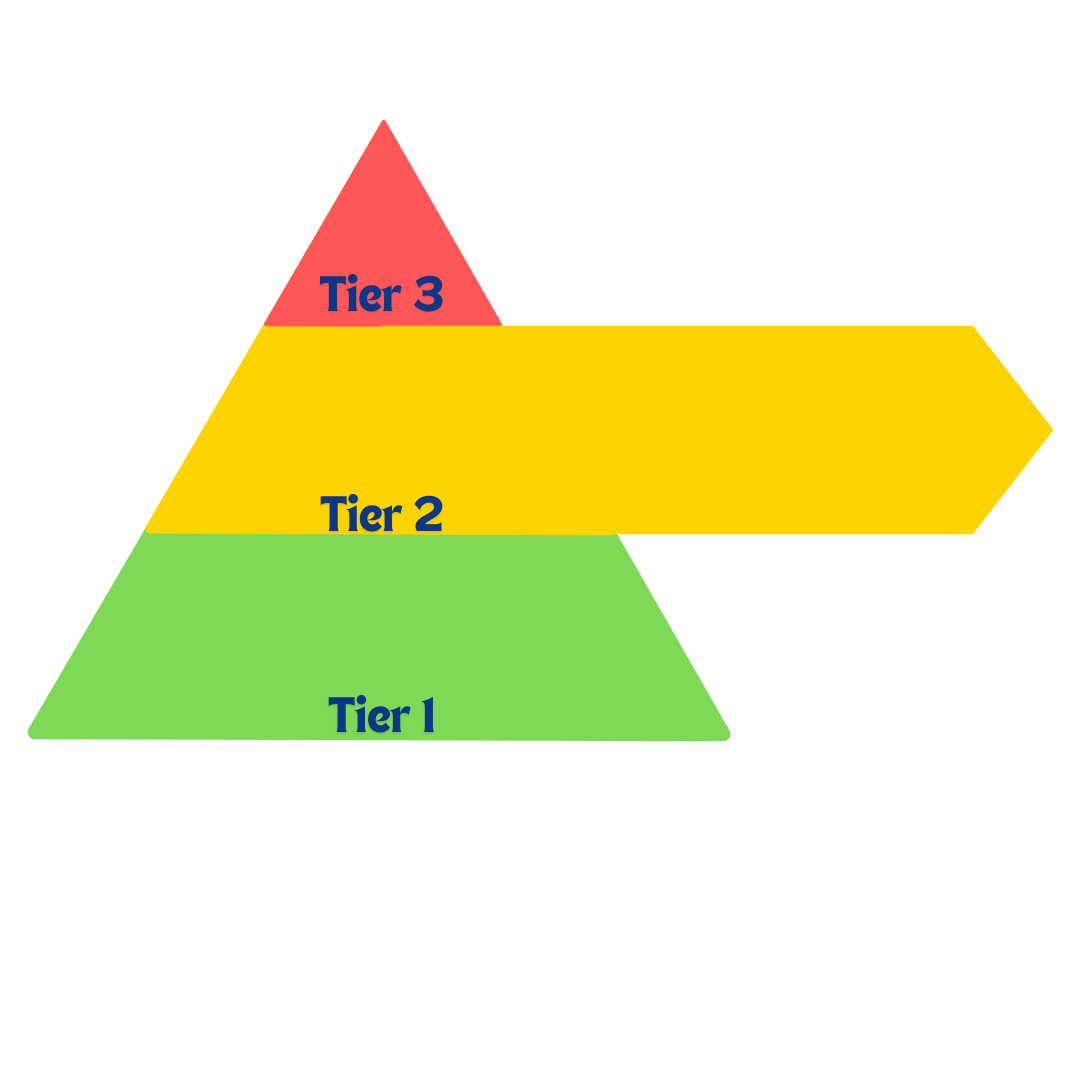Inclusive Education
“Inclusive education means that all members of every school community are valued and supported to fully participate, learn, develop and succeed within an inclusive school culture.”
Tier 1: Universal Interventions
-
We foster a positive community that enhances students' sense of connection and belonging by creating a safe and inclusive environment, which is best achieved through collaboration with the entire school community. We support the development of social and emotional skills, problem-solving abilities, healthy relationships, and a sense of autonomy, all contributing to lifelong mental health and wellbeing.
-
We create a positive, inclusive, and supportive school climate through Tier 1 Universal interventions like SWPBS, the Berry Street Education Model, and Resilience, Rights and Respectful Relationships, and Restorative Practices. Our activities, which promote positive mental health and wellbeing and develop social, emotional, and behavioral skills, are documented in our student engagement policy and delivered by school staff every day.
Tier 2: Targeted Intervention
-
Tier 2 funding allows for more targeted supports and adjustments for students with additional needs to fully engage in their education. We are able to enhance our capacity to identify needs and plan supports to implement effective strategies that not only benefit these learners but also improve overall educational practices for all students.
-
Tier 2 funding provides schools with additional resources to enhance their capacity and capability to support students with disabilities through more frequent and intensive adjustments. This funding supplements Tier 1 core funding, allowing schools to create inclusive environments tailored to their specific student needs.
Tier 3: Individualised Support
-
Tier 3 student-level funding provides additional support for schools to meet the unique and complex needs of students with disabilities. Schools must make reasonable adjustments to ensure these students can access education on the same basis as their peers, and the funding is determined through the Disability Inclusion Profile, which assesses eligible students' needs and required adjustments. This profile involves collaboration with parents and a structured meeting to agree on the level of adjustments necessary for the student, which ultimately informs the funding amount allocated to the school.
-
When planning for Tier 3 support, schools focus on targeted, evidence-based strategies that promote long-term benefits for individual students and enhance the overall capacity for inclusive education. Funding can be used for various supports, including specialised support staff, professional development, teaching programs, and assistive technology. Facilitating a collaborative approach among staff, where shared responsibility and professional learning are central to approaches and support, is considered best practice.
Note: Disability Inclusion funding is not designed to correlate to hours of 1:1 support





